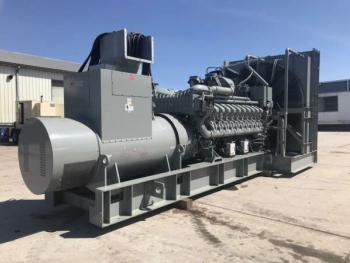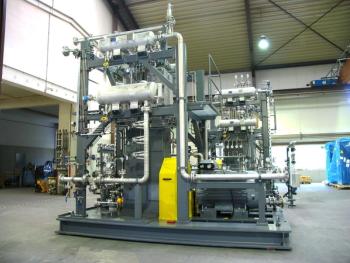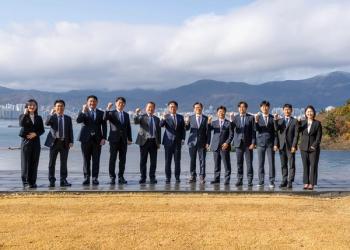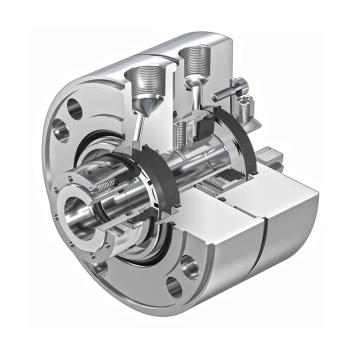
Setting Up Carbon-Capture Pilot Projects: Do’s and Don’ts
Kevin Lauzze of Sargent & Lundy discusses the rise of carbon-capture pilot projects and how technologies can successfully enter the market.
With the resurgence of gas-fired power driven by the current and projected increase in electricity demand, carbon-capture projects may serve to keep decarbonization initiatives on track into the future. At POWERGEN 2025, Kevin Lauzze, Senior Vice President of Sargent & Lundy, presented Lessons Learned from Carbon-Capture Pilot Projects, outlining the advantages and risks of carbon-removal pilots prior to market entrance.
Lauzze stressed the importance of pilot projects in advancing carbon-capture technologies, but many stall during development or fail to reach the demonstration phase entirely. Based on his company’s experience, he provided a comprehensive how-to on flexible design, scale-up challenges, equipment sourcing, and budget planning pitfalls.
Why Carbon Capture?
“The issue is greenhouse gases and the greenhouse gas effect,” said Lauzze. “Over the last handful of years, as we’ve emitted more greenhouse gases, we’ve amplified this. The gases are trapping more heat and making the Earth warmer. Greenhouse gases are comprised of multiple things, but primarily CO2, with most emissions coming from transportation, electricity generation, and industrial activities.”
Despite his explanation regarding the CO2 problem, he claims that the pollutant is here to stay with natural gas’ long-term necessity; thus, carbon-capture pilot projects will remain an important factor in continuing decarbonization efforts as more gas comes online. According to Lauzze, data centers are a two-fold driver behind carbon-capture growth and increasing gas integration.
Putting aside the immense power requirements, AI data centers will spur carbon-capture growth because “the people buying this power have very specific time-based sustainability goals,” said Lauzze. “Google wants a 50% CO2 reduction by 2030; Amazon wants net-zero by 2040; and Microsoft wants to be carbon-negative by 2030. This is what’ll drive the market.”
Carbon-Capture Pilot Examples
In a typical pilot, the Technology Readiness Level (TRL) lies around 6 or 7. At TRL 6, the complete prototype system is built and demonstrated in an applicable environment that resembles a future operational scenario; however, this version may not feature full system integration. At TRL 7, this prototype is demonstrated in a fully operational environment.
Sargent & Lundy has assisted companies in completing pilots at TRL6/7, and Lauzze provides specific examples: “The first one is at a Calpine facility in California using ION’s technology. It captures 10 tons of CO2 per day with an ION amine solvent. The unique aspect is its modular construction; it isn’t very big, but amine systems don’t save on height, instead on the diameter of the system. These 100-feet-tall modules were assembled in Texas and then shipped to California, but this caused a real challenge for this project.”
The next project for MTR Carbon Capture uses a membrane system to capture up to 150 tons of CO2 per day: “This is a good example of a project that hasn’t been tested at a larger scale, so a pilot is really important to help figure out optimization, failures, and costs,” said Lauzze. “One of the bigger challenges is that it’s located in Wyoming and needed a building. If you’re doing a pilot, you’ll want a controlled environment to perform testing and optimization without worrying about the cold. Consider where you build the pilot.”
He rounded out the pilot project examples with Chart Industries’ Sustainable Energy Solutions, which is demonstrating its carbon-capture technology at a cement plant. The system—about to be installed—will capture approximately 30 tons of CO2 per day and comes online in late 2025.
Funding Opportunities
“Pending the decisions of our current administration, there are currently many opportunities for the Department of Energy (DOE) to fund these projects,” said Lauzze. “Four projects have already been announced by the DOE and are underway, and people can apply for pilot project funding. The DOE is committed to funding these types of projects to surpass challenges associated with obtaining a TRL. There is about $70 million in project development funding with the DOE.”
Outside of DOE funding, there’s not much available for those willing to test their systems.
Despite the available funding for carbon-capture pilots, technology providers need certain guarantees to continue projects. These system developers are hesitant, according to Lauzze, to demonstrate their technologies on alternative generation sources or those phasing out, such as coal. Carbon-capture providers may not be willing to take risks on combined-cycle assets either, as there’s not much data on this technology combination.
How to Succeed
Lauzze said that all successful carbon-capture pilots reduce three kinds of risk: technology, deployment, and operational risks. Minimizing these risks during a pilot contributes to technology commercialization and market entrance, especially considering the role investors serve to put their money and reputation behind a technology for anticipated success.
He outlined several additional considerations for pilot project developers:
- Temporary vs. permanent installations must be evaluated, as it heavily impacts cost
- The test plan should be completed pre-FEED
- Pilots should embrace using smaller or used equipment, as some industrial vendors may not prioritize these orders, leading to longer wait times
- Demonstration equipment can be built from scratch
- Pilot projects should closely (or exactly) replicate the full-scale commercial model or operating scenario
Lastly, “The whole design depends on agreement,” said Lauzze. “As you enter a pilot, make sure all the stakeholders agree on its purpose. It’ll save on later changes and prevent confusion during field deployment. If you do this up front, it’ll go a long way.”
Newsletter
Power your knowledge with the latest in turbine technology, engineering advances, and energy solutions—subscribe to Turbomachinery International today.





